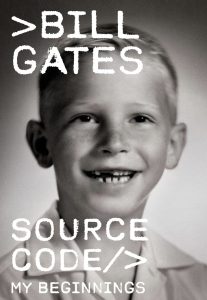 When I first heard of Generative AI, I was skeptical. Although it was clearly a gigantic step forward for machine learning. I covered the Hadoop/Big Data era – for five years. As noted before, we would ask what do we do with Big Data? The answer it turned out was Machine Learning. But it was complex, hard to develop, difficult to gather data for, and ROI was complicated or ephemeral. People would bemusedly ask if it had uses east of Oakland Bay. My experience with Big Data colored my perspective on Generative AI.
When I first heard of Generative AI, I was skeptical. Although it was clearly a gigantic step forward for machine learning. I covered the Hadoop/Big Data era – for five years. As noted before, we would ask what do we do with Big Data? The answer it turned out was Machine Learning. But it was complex, hard to develop, difficult to gather data for, and ROI was complicated or ephemeral. People would bemusedly ask if it had uses east of Oakland Bay. My experience with Big Data colored my perspective on Generative AI.
Generative AI requires great mountains of data to work. Herding that data is labor intensive. As with previous machine learning technologies, getting desired results from the model is difficult. Some engineer will come up with a tool to solve problems. And find some VC, and startups race about. Few apps get from prototype proof-of-concept to operational. Few pay their own way.
Benedict Evans, Geoffrey Hinton and Gary Marcus are just some of the people who more ably than I critiqued the LLM. But great excitement was unleashed on the global public. And there wasn’t much of an ear for their ‘wait a minute’ commentary.
But early this year, Deep Seek seemed to show that the rush to Generative AI – the rush of money for electricity and land to deploy widely – should be more carefully considered. Deep Seek was an event that arrived at a receptive moment.
It seems in a way a textbook case of technology disruption. That advocates were blind to the limits of scalability for LLMs, coming up with greater and greater kluges – think nuclear power – SMRs or other.
Meanwhile, a crew at a resource-strapped Chinese quant-tank saw ends around. The designers focused on efficiency rather than brute force, employing methods such as reduced floating-point precision, optimized GPU instruction sets, and AI distillation.
Engineers love benchmarks – they love to tear them down! Benchmarks are biased, yes. Even a child can figure that. But … when you look at Deep Seek’s recipe, it is clever engineering. None of it is new. Others have worked on TinyML for years. The type of hardware optimizations they did were bread and butter years ago. There are plenty of computer scientists the are working to get around Generative AI’s issues [scale/cost/hallucination/use cases being the big ones]. These issues make this Silicon Valley baby a suspect redeemer. With respect, Jim Cramer sometimes oversteps his actual areas of expertise.
That Deep Seek moment – don’t let anyone tell you it is more or less than that – has just been followed by an upswing in the contrarian view on LLMs. A world that would have nothing of it a year ago is now seriously discussing “The Illusion of Thinking” – a paper by Apple researchers that questions the true reasoning capabilities of large language models.
“The Illusion of Thinking” This may put a pall on Agentic AI, which has conveniently arisen as the answer to Generative AI’s first task: to finagle its way into real world workflows. Now, as summer begins, there is more of an ear for voices that cite the challenges, obstacles, and over-sell that have marked the last 24 months or so of the AI era. That can be helpful in the big task of understanding and taming LLMs for greater usage.
Penultimately, we have to hold in mind some contrary points going forward. It is not LLMs are not valuable, just that they have limits that hyperbole has obscured.
Inspiring to me was a recent post by network systems expert and author Bruce Davie. He reminds us that a rational middle path is often preferable to the extreme predictions of doom, bust, or boom that characterize today’s AI tempest. Humans can skew but the mean always calls, and we may be seeing that now. [Thanks to Davie for cueing me to New Yorker writer Joshua Rothman and, in turn F. Scott Fitzgerald, he of the adage of holding “two opposed ideas the mind at the same time” seen above.]
This seems like a good time to let the Substack cogitate on these great matters. While I may post yet this season, I am kicking up my heels, and dreaming about slapping skeeters in Up North in Wisconsin. And taking “Lise Meitner: A Life in Physics” down from the shelf.

 With the likes of Sam Altman and Elon Musk dashing about, we crouch for shelter now in an era where well-funded high-tech bros can live a life that was once reserved only for Doctor Strange.
With the likes of Sam Altman and Elon Musk dashing about, we crouch for shelter now in an era where well-funded high-tech bros can live a life that was once reserved only for Doctor Strange.

